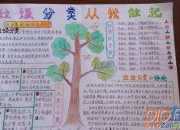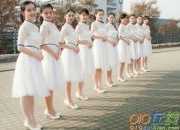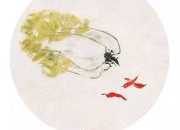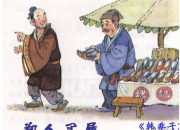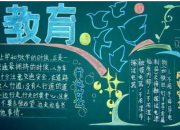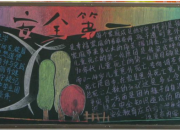经典安徒生童话故事大全
时间:2021-08-31《安徒生童话》是丹麦作家安徒生创作的童话集。闻名的故事有:《小人鱼》、《丑小鸭》、《卖火柴的小女孩》、《拇指姑娘》等。

一千年之内
Yes, in a thousand years people will fly on the wings of steam through the air, over the ocean! The young inhabitants of America will become visitors of old Europe. They will come over to see the monuments and the great cities, which will then be in ruins, just as we in our time make pilgrimages to the tottering splendors of Southern Asia. In a thousand years they will come!
The Thames, the Danube, and the Rhine still roll their course, Mont Blanc stands firm with its snow-capped summit, and the Northern Lights gleam over the land of the North; but generation after generation has become dust, whole rows of the mighty of the moment are forgotten, like those who already slumber under the hill on which the rich trader, whose ground it is, has built a bench, on which he can sit and look out across his waving corn fields.
“To Europe!” cry the young sons of America; “to the land of our ancestors, the glorious land of monuments and fancy—to Europe!”
The ship of the air comes. It is crowded with passengers, for the transit is quicker than by sea. The electro-magnetic wire under the ocean has already telegraphed the number of the aerial caravan. Europe is in sight. It is the coast of Ireland that they see, but the passengers are still asleep; they will not be called till they are exactly over England. There they will first step on European shore, in the land of Shakespeare, as the educated call it; in the land of politics, the land of machines, as it is called by others.
Here they stay a whole day. That is all the time the busy race can devote to the whole of England and Scotland. Then the journey is continued through the tunnel under the English Channel, to France, the land of Charlemagne and Napoleon. Moliere is named, the learned men talk of the classic school of remote antiquity. There is rejoicing and shouting for the names of heroes, poets, and men of science, whom our time does not know, but who will be born after our time in Paris, the centre of Europe, and elsewhere.
The air steamboat flies over the country whence Columbus went forth, where Cortez was born, and where Calderon sang dramas in sounding verse. Beautiful black-eyed women live still in the blooming valleys, and the oldest songs speak of the Cid and the Alhambra.
Then through the air, over the sea, to Italy, where once lay old, everlasting Rome. It has vanished! The Campagna lies desert. A single ruined wall is shown as the remains of St. Peter’s, but there is a doubt if this ruin be genuine.
Next to Greece, to sleep a night in the grand hotel at the top of Mount Olympus, to say that they have been there; and the journey is continued to the Bosphorus, to rest there a few hours, and see the place where Byzantium lay; and where the legend tells that the harem stood in the time of the Turks, poor fishermen are now spreading their nets.
Over the remains of mighty cities on the broad Danube, cities which we in our time know not, the travellers pass; but here and there, on the rich sites of those that time shall bring forth, the caravan sometimes descends, and departs thence again.
Down below lies Germany, that was once covered with a close net of railway and canals, the region where Luther spoke, where Goethe sang, and Mozart once held the sceptre of harmony. Great names shine there, in science and in art, names that are unknown to us. One day devoted to seeing Germany, and one for the North, the country of Oersted and Linnaeus, and for Norway, the land of the old heroes and the young Normans. Iceland is visited on the journey home. The geysers burn no more, Hecla is an extinct volcano, but the rocky island is still fixed in the midst of the foaming sea, a continual monument of legend and poetry.
“There is really a great deal to be seen in Europe,” says the young American, “and we have seen it in a week, according to the directions of the great traveller” (and here he mentions the name of one of his contemporaries) “in his celebrated work, ‘How to See All Europe in a Week.’”
